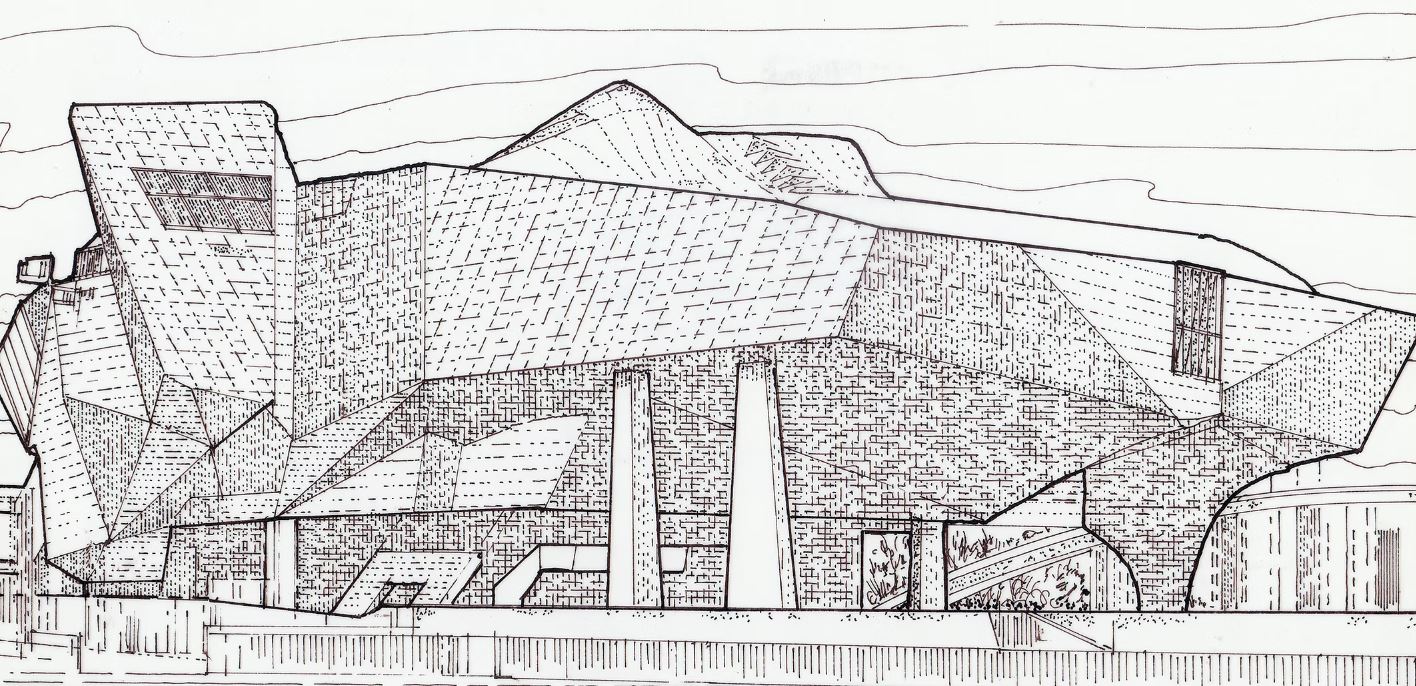by James Stevens Curl (July 2023)

Architectural Principles in the Age of Fraud by Branko Mitrović
(Novato CA: Gordon Goff, ORO Editions, 2022) 160 pp.
ISBN: 978-1-954081-45-1. Softback $24.95 £18-95
I had been in Scandinavia, where I had participated in debates about the appalling damage Modernism has done to old-established towns, part of the Norwegian Architectural Uprising against the deliberate Ugliness inflicted worldwide by what is very clearly a quasi-religious fundamentalist Cult, with beliefs founded on nonsense, humbug, and fake history concocted by those intent on constructing a Grand Narrative of Modernist architecture which does not stand up to serious examination, though swallowed by generations of terrorised, indoctrinated students. The prime example of the Grand Narrative was that pernicious book, Pioneers of the Modern Movement from William Morris to Walter Gropius, by Nikolaus Pevsner (1902-83), published in 1936, the title of which says it all, for what Pevsner disgracefully did, peering myopically through his Gropius-tinted spectacles, was to suggest a respectable smooth development from Arts-&-Crafts architecture to the nightmare, dystopian world of Modernism. What happened was NOT a smooth transition, but a complete break with the past: it was a brutal severance too. Not even the protests of certain elderly, but real, architects from that gloriously creative pre-1914 world, such as C.F.A. Voysey (1857-1941) and M.H. Baillie Scott (1865-1945), who vigorously objected to being associated with something they abhorred, not least its Godless Ugliness, could deter Pevsner from making his absurd claims, and others floundered in his wake.

On my journeys to and from Oslo, I read a splendid new book, refreshingly free from cant, falsehoods, and drivel, called, amusingly, Architectural Principles in the Age of Fraud: why so many architects pretend to be philosophers and don’t care how buildings look (ORO Editions, 2022, ISBN: 978-1-954081-45-1), by the Serbian-Norwegian intellectual, Professor Branko Mitrović (b.1961), which skewers the Cult’s pretensions, its obfuscatory humbug, its jargon-laden self-justifications, and its abysmal intellectual and spiritual emptiness. This marvellous polemic concludes that Modernism itself IS the crisis which wrecks our environment. I entirely agree.
Modernists do not care how buildings look: they never did. In 1954, Peter Reyner Banham (1922-88), a pupil of Nikolaus Pevsner, of course, and one of the gurus of trendiness and Modernism, declared, ex cathedra, that ‘façade treatments do not form part of the common theory of the Modern Movement … the problem of the façade does not exist; form follows function, and when the problems of the interior have been correctly resolved, the exterior form will be found to have crystallized into an unarguable solution.’ And John Summerson (1904-92) declared that the chief contribution of the Modern Movement was ‘social,’ and that the source of its ‘unified approach’ lay in the architect’s ‘programme,’ which he defined as the ‘description of spatial dimensions, spatial relationships and other physical conditions required for the convenient performance of specific functions … and the resultant unity … is the unity of a process.’ From these chilling statements any possibility that a work claiming to be ‘architecture’ might have any emotional or æsthetic impact was ignored: the Modernists insisted all that was required was ‘designing’ a building from the inside out, letting its external appearance look after itself. These factors go a long way to explaining why the Modern Movement failed to present anything like an agreeable face to the world, let alone to the street.
Historically, true architecture involved choice, a certain freedom of action, conscious attempts to establish hierarchies of values, and design concerned with metaphors through which those sets of values were made overt and agreeably expressed. It was not ‘all about structure,’ as doctrinaire Modernists would hold, and it was not about the sort of minimal effort that produced far too many badly functioning, seedy, leaking, industrialised, ugly buildings in response to loudly trumpeted, bullying manifestoes and idiotic simplistic slogans. The Modernists’ pseudo-moralising fixations on supposed ‘function,’ industrialised methods of construction, rejection of everything in favour of the ‘clean slate,’ and scary pronouncements concerning ‘total architecture’ have produced painfully obvious failures in the context of the urban environment. Pevsner himself, confessing to ‘National Socialist feelings,’ claimed in the first edition of his Pioneers, that the Modern Movement was the new style of the twentieth century because it was a genuine style as opposed to a passing fashion, and was totalitarian (my italics .. the word was dropped in later editions).
We might well consider reminding ‘architects’ of what cities no longer are, but really ought to be, ‘of what human economies no longer pursue, but must deliver again, namely shelters for the good life and the common good, objects of beauty and dreams,’ as Léon Krier put it so eloquently some time ago. I have long given up on believing Modernism could ever produce anything but an insensate, hideous, dystopian environment from which all delight, all pleasure, all beauty, all humanity are absent, but I detect the stirrings of an uprising against the deliberate destroyers of our human habitat. Surviving traditional cities and architecture have always offered ideals in harmony and beauty in an increasingly destabilised, disrupted world: they remain desirable models of cultural identity and civilised living, in contrast to the malfunctioning dumps deliberately foisted on us all by ruthless, totalitarian, greedy, Modernist barbarians.
This marvellous book denounces, with very good reason, the opportunistic ‘architectural’ and ‘planning’ establishments still clinging to the vacuous old paradigms of cut-throat Capitalism and inhumane Modernism which have manifestly failed in every respect except to create hell on earth. Yet that same establishment still insists on indoctrinating and bullying students in ‘schools of architecture’ to accept the tenets of a ferociously destructive, humourless, insane Cult which has created deserts devoid of comfort, security, harmony, enlightenment, or pleasure. As my late, great friend, Roderick Gradidge, once observed, ‘Modernism never sold a pint of Bitter,’ which sums up very succinctly the utter incapacity of Modernism to make places that can accommodate human beings in comfort and give pleasure. Essentially, it is very unfunny, extremely grim, and catatonically boring in its nihilism and spiritual emptiness.
As for the techniques of obfuscatory humbug used as a ‘desperate response to the crisis created by the failure of Modernism,’ Mitrović, sensibly, has no mercy, denouncing them as part of ‘a strategy of a vehement, emotional denial’ that Modernist ‘architecture’ (the only kind of ‘architecture’ which, by the 1970s, ‘architects’ knew how to design and ‘academics’ could inculcate) is visually, formally, and æsthetically inferior to pre-Modernist approaches to design. In contrast, Mitrović notes that those who have rejected Modernism have also steered away from obfuscation, and used clarity and sound scholarship to back their arguments. It is not only the utter failure of Modernism in architecture that is disturbing: it is the denial of this catastrophic failure by ‘architects’ and ‘academics’ that is so depressing, because the environment in which we all have to live has been massively affected by such failure, a dismal and utter failure obvious to all those who have not been visually desensitised or brainwashed, which might suggest that the ‘architectural profession,’ as it is constituted today, is rapidly going in the direction of irrelevance and obsolescence. A quick perusal of the once-respected RIBA Journal as it is manifested today simply confirms that suggestion.
It is time everyone acknowledged the deliberate destruction obvious all around us, and stopped it by ceasing to employ Modernist ‘architects,’ swallowing obfuscatory pretentious nonsense, and refusing to support dissembling politicians. We should all strive for a return to standards of civility and beauty in the places in which we have to work, live, and interact, and in order to achieve that the Augean Stables, including those of academe, need to have a complete clear-out.

This review was previously published in The Critic, June 10, 2023.
Table of Contents
Professor James Stevens Curl is a Member of the Royal Irish Academy, and in 2017 was the recipient of The President’s Medal of The British Academy for his ‘outstanding service to the cause of the humanities.’ The author of numerous scholarly books on architecture, his Making Dystopia: The Strange Rise and Survival of Architecture Barbarism (Oxford & New York: Oxford University Press, 2018, 2019) has received praise and abuse in almost equal dollops.
Follow NER on Twitter @NERIconoclast








2 Responses
Well. Great review of the book and some interesting tidbits. “Totalitarian architecture. ” How about that. Socialist and communist leanings are implied and several of the culprit Modernists have admitted such. It takes much whittling at the bombastic endurance of the Moderns to take them down and am happy to see someone like yourself going after them with double barrels. Always incisive essays and true conclusions. An entire generation of architects and artists have been bamboozled. Of course representational art is superior to abstraction. Of course there is an affinity for classicism rather than modernism. I have continued to ponder how 3,500 years of historical precedent could be wiped clean. Kristallnacht. It is only through crazed zealotry hiding behind the curtain of technology that this could have happened. Again, I think the left is no doubt supremely supportive of Modernism and its Decon offspring. They railed against the previous President’s interest in banning Modern from public buildings and they revealed their hand finally. This has parallels to our current political system and the brainwashing we have belatedly recognized affecting education, media, the courts, etc. Thank you again.
A very compelling analysis and frankly—to anyone who has a brain and has not been perverted by modernity—affirmation of the obvious. The fact is, people pretend that walking through a cathedral and living in a concrete block are the same thing, but the truth is stark— not only does a two year old know the difference, we cannot even contemplate building what was commonly achieved 500 years ago. We don’t know how, don’t have the standards of education, appreciation, belief in transcendence and skills even with all the technology and machinery in the modern world—we no longer do difficult, complex and mysterious—the utilitarian illusion and certainly and control is too strong.